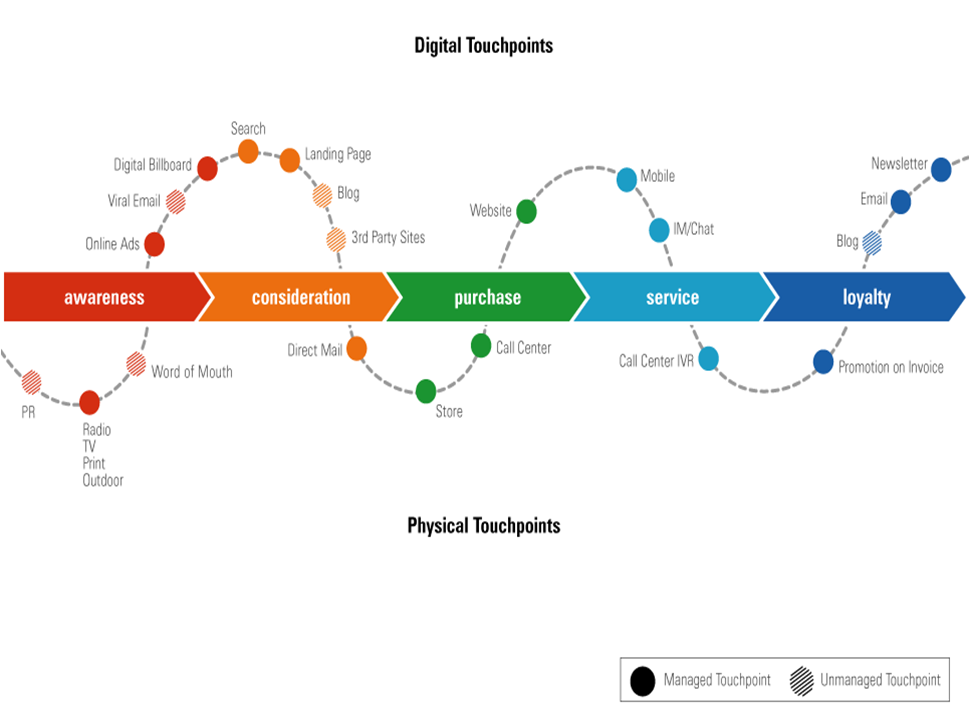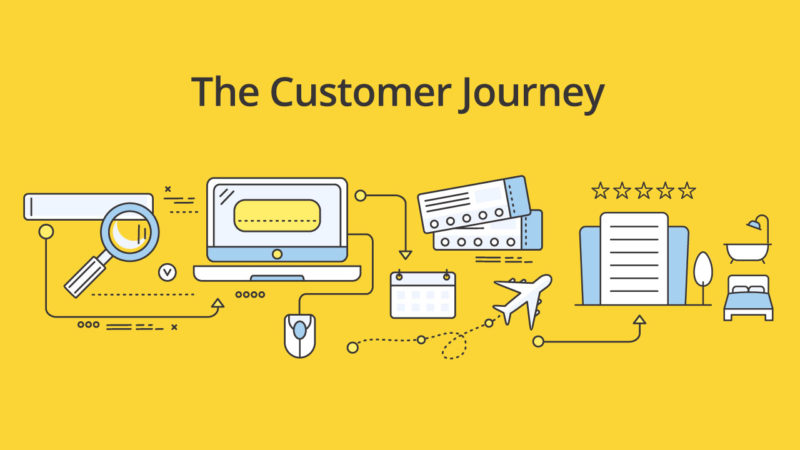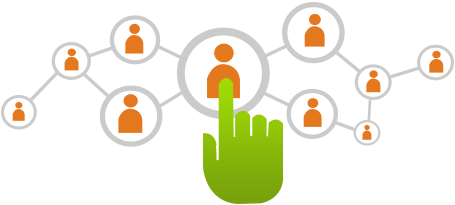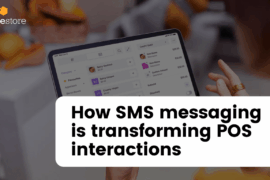In the retail industry, we all know that customers do not buy your product right away. They will go through a different long or short way before making the final shopping decision. Hence, the mission of the retailers is to design a journey so that consumers will desire to join and go to the end of it.
So, to reach the big goal, we had better start with one of the crucial perspectives. This is the TouchPoint between the buyers and retailers on the journey that creates the customer experience. Consequently, in the new Omnichannel world, how to manage Omnichannel touchpoints of a consumer when the demand of customers is rapidly growing? Let’s discover!
1. What is Omnichannel Touchpoints?
Definition…
TouchPoint – is the space where appears active interaction with customers. That is the first time, customers see your brand name, then know your product. From the time of purchase, it is a journey shopping experience, their feelings about the company’s services.
Moreover, interaction with the touchpoints has shaped the look and feel between customers and businesses. Retailers that communicate well with customers in all touchpoints will win customers hearts as well as all the competition in the new Omnichannel universe.

But …
In the past, customers interacted with businesses through analogue media such as newspapers and television. Today, they interact with businesses in both traditional analog and digital channels. This creates a lot of complexity and challenges for businesses at the point of contact with customers. Just one small mistake at a touchpoint, customers can abandon the company to switch to another provider, or even they will spread the disadvantageous information on Facebook or the forum causing trouble for the company.
2. Why we need to focus on customer touch points in the Omnichannel world?
In order to watch your success grow and demand to kill two birds with one stone – increasing revenue and customer loyalty. Don’t forget to focus on customers touchpoints. Because they will be able to enhance the customer experience and build a reasonable customer journey map.
Do you think that a great product will prove itself its quality regardless of how the company run marketing strategies or approach customer experience? However, this is not really true.
Outstanding products often have to travel a long way to satisfy customers as well as loyalty of customers with the brand. Today’s customers often have to choose between multiple vendors in the same product, so customer experience is the only thing that makes a brand go beyond a competitor’s competitive market.
A positive customer experience can make it easier for customers to draw out money from their wallets even when the price is slightly higher.
3. The main stages of TouchPoints – Itinerary of the customer experience through touchpoints
Popular customer touchpoints include:
- Customer Service
- Promotional Events
- A fast Magento POS system
- Products
- Websites
- Sponsorships
- Retail locations
- Advertisements
- Mail Delivery
- Employee satisfaction
- Call centers
- Clinics
- Word of mouth
- Questionnaires
- Rebates
- Blogs and e-books
In detail,…
According to the customer experience model, a typical consumer will experience five steps:
- Awareness
- Consideration
- Purchase
- Remembrance
- Engagement (Customer’s loyalty)

Based on this model, the brand needs to build a point-of-contact system on five key milestones, using the appropriate marketing/communication channels, and step by step following the user experiences the brand/product.
At the awareness stage, the most commonly used channels are the ones with the greatest reach, such as TVC, Social Media.
Stage of consideration is when consumers will consult with friends or professionals, so the brand needs to “contact” with users by the website, reviews on social media about product and word of mouth marketing to build trust.
When the consumer decides to buy – Purchase, the touchpoints with the brand will be the product packaging, display space, animated activities or website interface (with e-commerce).
After the purchase, consumers will evaluate the product, brand’s service, and give feedback online to let the people around them know. At this time, the touch point is the customer support services, promotions, email marketing.
When users become loyal and auto-active consumers of the brand/product, the touch point is more abstract – It is the image of the brand in the user’s mind when chatting, sharing.
In today’s era, as the world of technology evolves incessantly, consumer behavior becomes more complex, which retailers need to focus not be whether the digital tools that can replace traditional tools or not. The main point comes from how to combine them to track the movement of consumers and convey the brand image in a variety of ways, most clearly to them. All is for the final good, provide a seamless shopping experience for consumers with Omnichannel strategies.
4. What businesses need to do?
It would be better if business retailers can capture the moments which your customers first noticed your brand, their perception of product existence, the prospect’s search of the potential customers, the time they buy and use the product and what other customers say about your merchandises as well.
These points may be packaging, convenience, usefulness, quality, good customer service and so on. All these perspectives contribute to the customer experience journey.
Since then, let’s build a customer experience journey map. In this way, you will be able to measure how your customers respond and how they interact with your brand. With such realistic measurements, you will know what your customers want and need with your product, and improve it better.
Customer journey mapping

Get started with what you know about your customers at the moment, and get back to understanding what motivates customers to take action, plan, discover the customer’s “pain points”, and find the tactics to “touch” it. Retailers can operate the on system the customer journey in many ways but the basic steps required are:
- Outline customer’s personality: Before embarking on any marketing campaign, make sure you have a certain background on the customer. Can you point from 3 to 5 personality points and styles appropriate for the target market? These outlines should include both current and potential customers.
- Consider the level of market access: Start by drawing a visual map of the approaches you will do to each of your target customers, including rankings, social networks, influencers and successful brands, landing pages, call-to-action, 3rd party addresses and places where you think your customers will interact with the brand. You will need to standardize how to contact potential customers and the location of these touch points during the shopping process.
- Map the touch points: Take the time to recalculate the total number of traffics, leads, and existing customers you have received from each channel during their shopping journey. Then you need to add further insights into each of these touch points to get a more comprehensive picture of where you are in sales and vice versa. Memorize the customer’s “pain points” in this map with different customer portraits.
- Identify action points: Use this map to guess the areas or points where customers make the most purchasing decisions. If you really want to get insight into your customers, identify the places where old customers come back and the touch points that create more interaction with your customers on the social network. These addresses are where you can expand your influence and increase your ROI.
- Collate maps. You need to pay attention to compare maps with different customer characteristics, and draw the reason for the successful transition. At this point, you will know how to bring into play strengths and overcome weaknesses.
For more information, you can go to this article to get some further knowledge on how to map Omnichannel Customer Journey.
How to manage the Omnichannel touchpoints of a consumer
Have you listened to your customers? How to manage the Omnichannel touchpoints of a consumer? Here’s how to enhance the Omnichannel experience for your clients.

Understand the expectations of Omnichannel consumers
Consumers in Omnichannel want two things from online retailers: easy access to product information and seamless shopping experience. This is because they are using multiple sources to search for product information while shopping.
According to the Beyond the Checkout Cart report by MIT, 80% of shoppers check online prices, with one-third of them accessing information on their mobile device while in the store. This shows that multi-channel consumer channels are using multiple channels to keep themselves informed as possible. Developing a multi-threaded channel strategy, therefore, becomes a priority for online retailers to bridge the gap between online and offline shopping experience.
However, online retailers are lacking in meeting their expectations, based on a new Vantiv Insight research report from eCommerce to Omnicommerce. To help merchants merge their channels to fit the needs of consumers, some Omnichannel vendors have provided Omnichannel solution for retailers to lend a hand.
Provide up-to-date information for consumers
As the multi-channel client wants to be notified, you may want to consider that in your content marketing strategy. Newsletters are a great way to update consumers about launches and promote the latest products.
Omnichannel consumers also love to conduct online research before making a purchase. They will go to the real retailer and check this item, to make sure the information they find matches their experience. Therefore, it is important for online retailers to create a seamless, online and in-store shopping experience.
eCommerce has become more complex over the years and it is predicted that retail channel will take on online shopping. Retailers will need to ensure that their Omnichannel strategy is appropriate for both online and offline.
In conclusion…
With more modern tools and better sources of information today, before embarking on a business strategy, companies now have the ability to create a customer journey map correctly.
And to build this map, retailers need to track every customer touch point, to have a personal connection with them. The demand of customers is increasing, and they always want to experience more, shopping everywhere and all the time. Getting a good Magento point of sale can be a good start. The point of contact, when they interact with the brand is not limited, it can be in-store, online, …
Only when you understand the customer, you can achieve success in terms of revenue and enhance the influence of the brand. Let’s follow the journey of the customer to boost customer loyalty for a long-lasting engagement.




